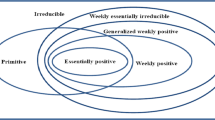Abstract
In this paper, we present an algorithm to find the weakly irreducible normal form of tensors. Based on the weakly irreducible normal form of nonnegative tensors, we present a convergent algorithm for computing the spectral radius of any nonnegative tensors. Numerical results are reported to show that the proposed algorithm is efficient and also able to compute the spectral radius of any nonnegative tensors.
Similar content being viewed by others
References
Bader BW, Kolda TG, et al (2015) Matlab tensor toolbox version 2.6. Available online
Brualdi RA, Cvetkovic D (2008) A combinatorial approach to matrix theory and its applications. CRC Press,
Chang K, Qi L, Zhang T (2013) A survey on the spectral theory of nonnegative tensors. Numer Linear Algebra Appl 20(6):891–912
Cormen TH (2009) Introduction to algorithms. MIT press,
De Lathauwer L, De Moor B, Vandewalle J (2000) On the best rank-1 and rank-(\(r_1, r_2,\cdots, r_n\)) approximation of higher-order tensors. SIAM J Matrix Anal Appl 21(4):1324–1342
Friedland S, Gaubert S, Han L (2013) Perron-Frobenius theorem for nonnegative multilinear forms and extensions. Linear Algebra Appl 438(2):738–749
Frobenius FG (1912) Über Matrizen aus nicht negativen Elementen. Königliche Gesellschaft der Wissenschaften,
Hopcroft JE, Ullman JD (1987) Data structures and algorithms. Addison-Wesley,
Hu S, Qi L (2016) A necessary and sufficient condition for existence of a positive perron vector. SIAM Journal on Matrix Analysis and Applications 37(4):1747–1770
Hu S, Huang Z, Ling C, Qi L (2013) On determinants and eigenvalue theory of tensors. J Symb Comput 50:508–531
Hu S, Huang Z, Qi L (2014) Strictly nonnegative tensors and nonnegative tensor partition. Science China Mathematics 57(1):181–195
Kolda TG, Bader BW (2009) Tensor decompositions and applications. Siam Review 51(3):455–500
Kolda TG, Mayo JR (2010) Shifted power method for computing tensor eigenpairs. SIAM J Matrix Anal Appl 32(4):1095–1124
Lim L (2005) Singular values and eigenvalues of tensors: a variational approach. In: Computational Advances in Multi-Sensor Adaptive Processing, 2005 1st IEEE International Workshop on, IEEE, pp 129–132
Ng M, Qi L, Zhou G (2009) Finding the largest eigenvalue of a nonnegative tensor. SIAM J Matrix Anal Appl 31(3):1090–1099
Qi L (2005) Eigenvalues of a real supersymmetric tensor. J Symb Comput 40(6):1302–1324
Qi L, Luo Z (2017) Tensor Analysis. Society for Industrial and Applied Mathematics, Philadelphia, PA, https://doi.org/10.1137/1.9781611974751
Shao J (2013) A general product of tensors with applications. Linear Algebra Appl 439(8):2350–2366
Shao J, Shan H, Zhang L (2013) On some properties of the determinants of tensors. Linear Algebra Appl 439(10):3057–3069
Sharir M (1981) A strong-connectivity algorithm and its applications in data flow analysis. Computers & Mathematics with Applications 7(1):67–72
Tarjan R (1972) Depth-first search and linear graph algorithms. SIAM J Comput 1(2):146–160
Yang Y, Yang Q (2010) Further results for Perron-Frobenius theorem for nonnegative tensors. SIAM J Matrix Anal Appl 31(5):2517–2530
Zhou G, Qi L, Wu S (2013a) Efficient algorithms for computing the largest eigenvalue of a nonnegative tensor. Front Math China 8(1):155–168
Zhou G, Qi L, Wu SY (2013b) On the largest eigenvalue of a symmetric nonnegative tensor. Numer Linear Algebra 20(6):913–928
Acknowledgements
The authors are very grateful to the editor and the anonymous referee for their valuable suggestions and constructive comments, which have considerably improved the paper. We also thank Prof. Yimin Wei for his warm help. This work was supported by the Doctoral Scientific Research Foundation of Guizhou Normal University in 2017(Grant number GZNUD[2017]26), the National Natural Science Foundations of China (Grant number 11671105), the Science and Technology Projects of Guizhou Provincial Department of Education (Grant number KY[2015]352).
Author information
Authors and Affiliations
Corresponding author
Additional information
Communicated by Jinyun Yuan.
Publisher's Note
Springer Nature remains neutral with regard to jurisdictional claims in published maps and institutional affiliations.
Rights and permissions
About this article
Cite this article
Liu, Q., Chen, Z. An algorithm for computing the spectral radius of nonnegative tensors. Comp. Appl. Math. 38, 90 (2019). https://doi.org/10.1007/s40314-019-0853-1
Received:
Revised:
Accepted:
Published:
DOI: https://doi.org/10.1007/s40314-019-0853-1




